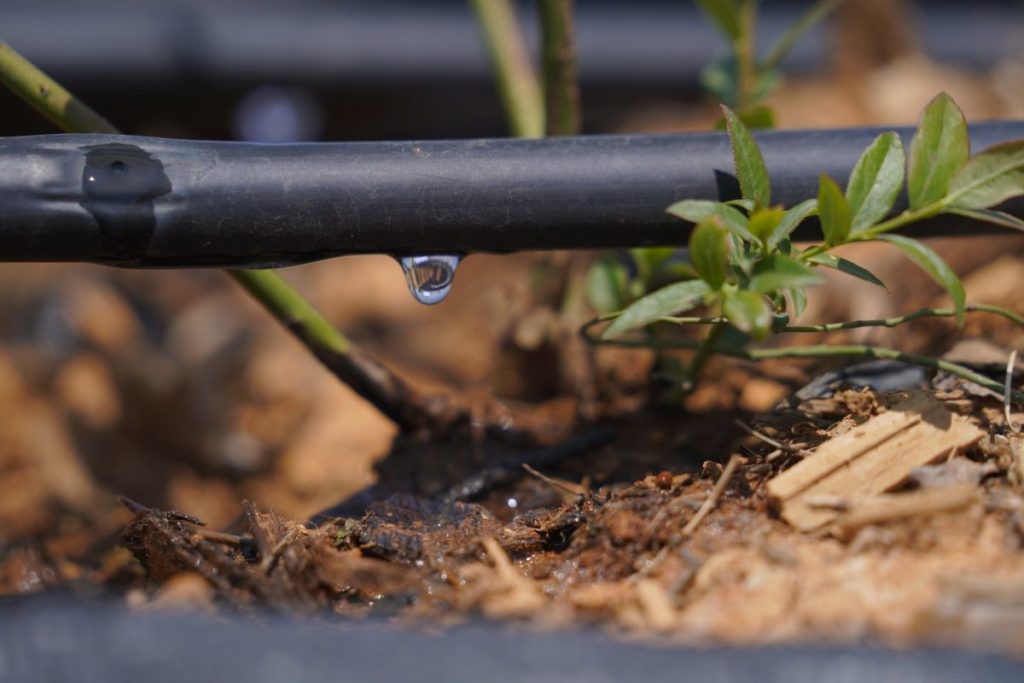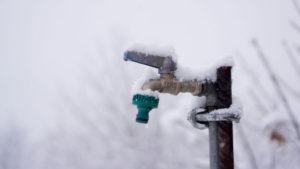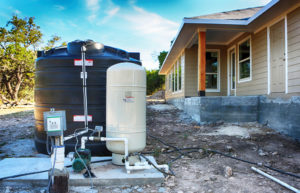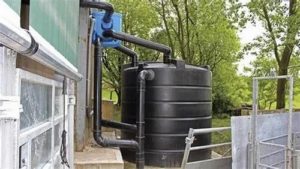Drip irrigation has revolutionized agriculture by providing a water-efficient solution for crop production.
By delivering water directly to the roots of plants, drip irrigation can significantly increase crop yields while minimizing wasteful evaporation.
With advanced technologies and proper planning, farmers can optimize their drip irrigation systems to achieve maximum returns on their crops.
We will explore efficient drip irrigation techniques that help maximize crop yields, leading to improved profitability and sustainability in agriculture.
Soil Moisture Management
Drip irrigation helps to maintain optimal soil moisture levels, which is essential for crop growth and yield. By monitoring soil moisture levels, farmers can adjust their irrigation schedules to ensure that their crops receive the right amount of water at the right time.
Drip irrigation is a superior method for maintaining soil moisture levels, as it delivers water directly to the roots of the plants, reducing evaporation and runoff.
By monitoring soil moisture levels, farmers can adjust their irrigation schedules to ensure that their crops receive the right amount of water at the right time, preventing both overwatering and underwatering.
Overwatering can lead to waterlogged soil, which can cause root rot and reduced plant growth, while underwatering can result in drought stress, lowering yields and plant health.
To properly manage soil moisture, farmers should invest in soil moisture sensors or meters, which can provide real-time data on the moisture levels in their fields.
This information can be used to adjust irrigation schedules, tailoring the water application to the specific needs of each crop and field.
In addition, farmers can implement crop water use efficiency techniques, such as mulching, which helps to retain moisture in the soil, and cover cropping, which improves soil health and increases water retention.
By taking a proactive approach to soil moisture management, farmers can optimize crop growth, yields, and profitability while minimizing water usage and reducing waste.
Targeted Water Application
Drip irrigation delivers water directly to the roots of the crops, reducing waste and runoff. This targeted approach helps to optimize water use and reduce the risk of over-watering, which can be detrimental to crop health and yield.
Drip irrigation is a highly efficient method of delivering water directly to the roots of crops, reducing waste and runoff.
By targeting the water application directly to the roots, drip irrigation helps to optimize water use and minimize the risk of over-watering, which can be detrimental to crop health and yield.
Traditional flood irrigation methods, on the other hand, often result in a significant amount of water being lost through evaporation and runoff, leading to inefficient use of this precious resource.
With drip irrigation, the water is applied directly to the soil, reducing the need for excessive watering and helping to preserve soil health.
This targeted approach also helps to reduce the risk of water-borne diseases and pests, which can be a major concern in agriculture.
Overall, drip irrigation is an excellent solution for farmers looking to optimize water use, improve crop health, and reduce the environmental impact of their irrigation methods.
Improved Water Efficiency
Drip irrigation systems can significantly reduce water consumption compared to traditional flood irrigation methods. By using water-efficient drip irrigation techniques, farmers can minimize their water usage and reduce their operating costs.
Drip irrigation systems are a highly effective way to conserve water and reduce operating costs for farmers.
Unlike traditional flood irrigation methods, which involve flooding the entire field with water, drip irrigation systems deliver water directly to the roots of the plants.
This targeted approach ensures that water is used only where and when it is needed, resulting in significantly reduced water consumption.
In fact, studies have shown that drip irrigation systems can reduce water usage by up to 50% compared to traditional flood irrigation methods.
This not only saves farmers money on their water bills but also helps to conserve this precious resource for future generations.
Drip irrigation systems can help to improve crop yields and reduce soil salinization, making them an important tool for sustainable agriculture.
By adopting water-efficient drip irrigation techniques, farmers can not only save money but also contribute to a more sustainable future for their communities and the environment.
Reduced Water Logging
Drip irrigation helps to reduce water logging, which can be a major issue in wet soils. By delivering water directly to the roots of the crops, drip irrigation helps to prevent water from pooling on the surface, reducing the risk of water logging and root rot.
Drip irrigation is a highly effective solution for reducing water logging in wet soils, thereby minimizing the risks of root rot and other related issues.
By delivering water directly to the roots of the crops, drip irrigation ensures that the soil surface remains dry, preventing water from pooling and causing logging.
This is particularly beneficial for crops grown in areas with heavy rainfall or high humidity, where water logging can quickly become a major problem.
Drip irrigation allows for precise control over water application, allowing farmers to tailor their irrigation schedules to the specific needs of their crops, further reducing the risk of water logging.
With its ability to deliver water directly to the roots of the plants and reduce water logging, drip irrigation is an invaluable tool for farmers looking to improve crop yields and soil health.
Improved Crop Health
Drip irrigation helps to promote healthy crop growth by providing crops with a consistent and controlled supply of water. This can help to reduce the risk of pests and diseases, improve crop quality, and increase yields.
Drip irrigation is an excellent method for promoting healthy crop growth, as it provides crops with a consistent and controlled supply of water.
By delivering water directly to the roots of the plants, drip irrigation helps to reduce the risk of pests and diseases, improve crop quality, and increase yields.
Without proper irrigation, crops can become stressed and more susceptible to pests and diseases, which can lead to reduced yields and lower quality produce.
Drip irrigation helps to mitigate these risks by providing crops with a steady supply of water, allowing them to grow strong and healthy.
By delivering water directly to the roots of the plants, drip irrigation helps to reduce water waste and minimize the risk of overwatering, which can be detrimental to crop health.
By adopting drip irrigation techniques, farmers can improve crop health, increase yields, and produce higher quality crops.
Increased Yields
Drip irrigation can help to increase crop yields by providing crops with the right amount of water at the right time. By optimizing water use, farmers can improve crop health and productivity, leading to higher yields and improved profitability.
Drip irrigation is a precise method of delivering water directly to the roots of crops, allowing for optimal water use and maximized crop yields.
By providing crops with the right amount of water at the right time, drip irrigation can significantly improve crop health and productivity.
This is particularly important in regions with limited water resources, as drip irrigation can help to conserve water and reduce waste.
Drip irrigation can help to reduce the risk of water-borne diseases and improve crop quality, leading to higher yields and improved profitability for farmers.
By adopting drip irrigation practices, farmers can significantly increase their crop yields and improve the overall health and sustainability of their crops.
Reduced Labor Costs
Drip irrigation systems can reduce labor costs by minimizing the need for manual watering and maintenance. Automated systems can be programmed to deliver water at specific intervals, reducing the need for manual labor and improving efficiency.
Drip irrigation systems are designed to minimize the need for manual watering and maintenance, resulting in significant cost savings on labor.
By automating the water delivery process, farmers can program the system to deliver water at specific intervals, reducing the need for manual labor and improving efficiency.
This means that farmers can focus on other important aspects of their operation, such as crop management and monitoring, rather than spending hours each day watering their crops.
Automated systems can be programmed to adjust water delivery based on weather conditions and soil moisture levels, further optimizing water use and reducing waste.
As a result, drip irrigation systems can help farmers save time and money on labor costs, allowing them to increase their productivity and profitability.
Improved Crop Quality
Drip irrigation can help to improve crop quality by providing crops with a consistent and controlled supply of water. This can help to reduce the risk of overwatering or underwatering, which can lead to reduced crop quality and lower yields. By optimizing water use, farmers can improve crop quality and increase profits.
Drip irrigation is a proven technology that can significantly improve crop quality by providing crops with a consistent and controlled supply of water.
Unlike traditional flood irrigation methods, drip irrigation delivers water directly to the roots of the plants, allowing for a more targeted and efficient use of water.
This consistent and controlled supply of water helps to reduce the risk of overwatering or underwatering, which can lead to reduced crop quality and lower yields.
By optimizing water use through drip irrigation, farmers can improve crop quality, increase yields, and ultimately boost their profits.
Drip irrigation can help to reduce soil salinization, nutrient leaching, and waterlogging, all of which can negatively impact crop quality and yields.
By adopting drip irrigation, farmers can improve the overall health and productivity of their crops, leading to better fruit and vegetable quality, increased yields, and improved profits.
Want More? Dive Deeper Here!
Hey there! If you’re the type who loves going down the rabbit hole of information (like we do), you’re in the right spot. We’ve pulled together some cool reads and resources that dive a bit deeper into the stuff we chat about on our site. Whether you’re just killing time or super into the topic, these picks might just be what you’re looking for. Happy reading!






